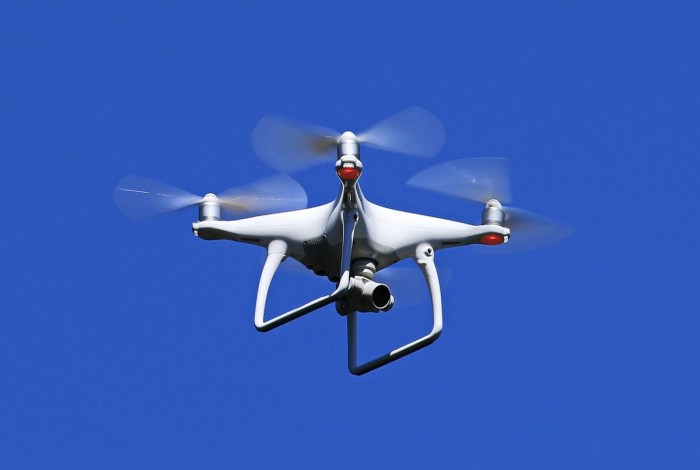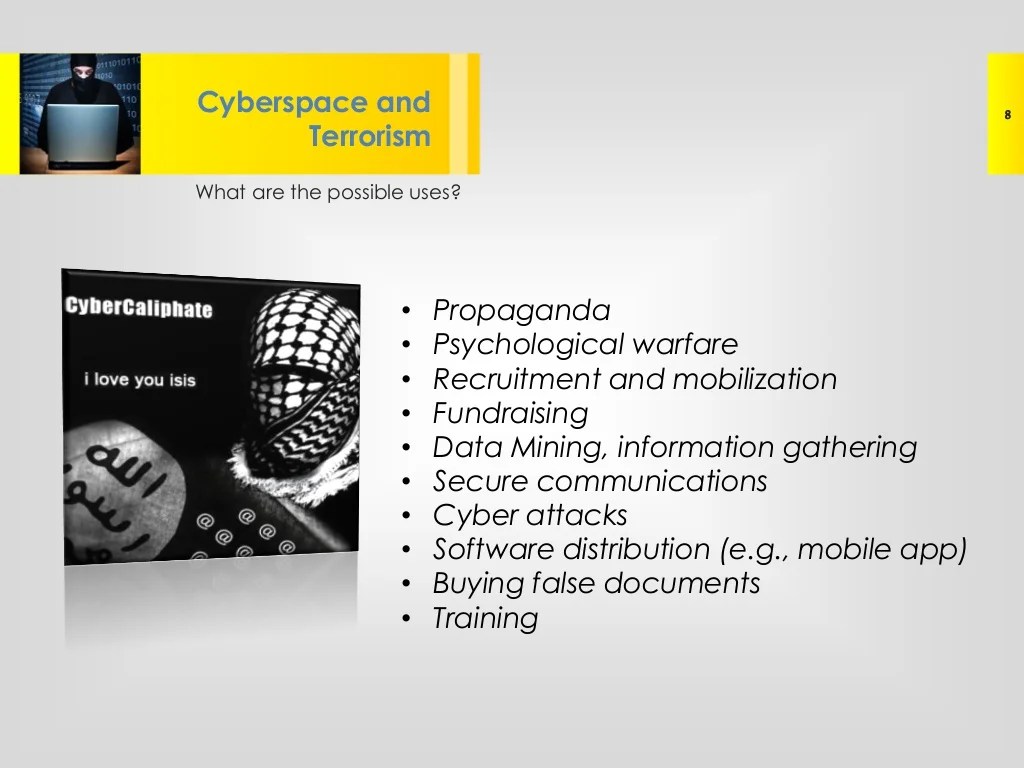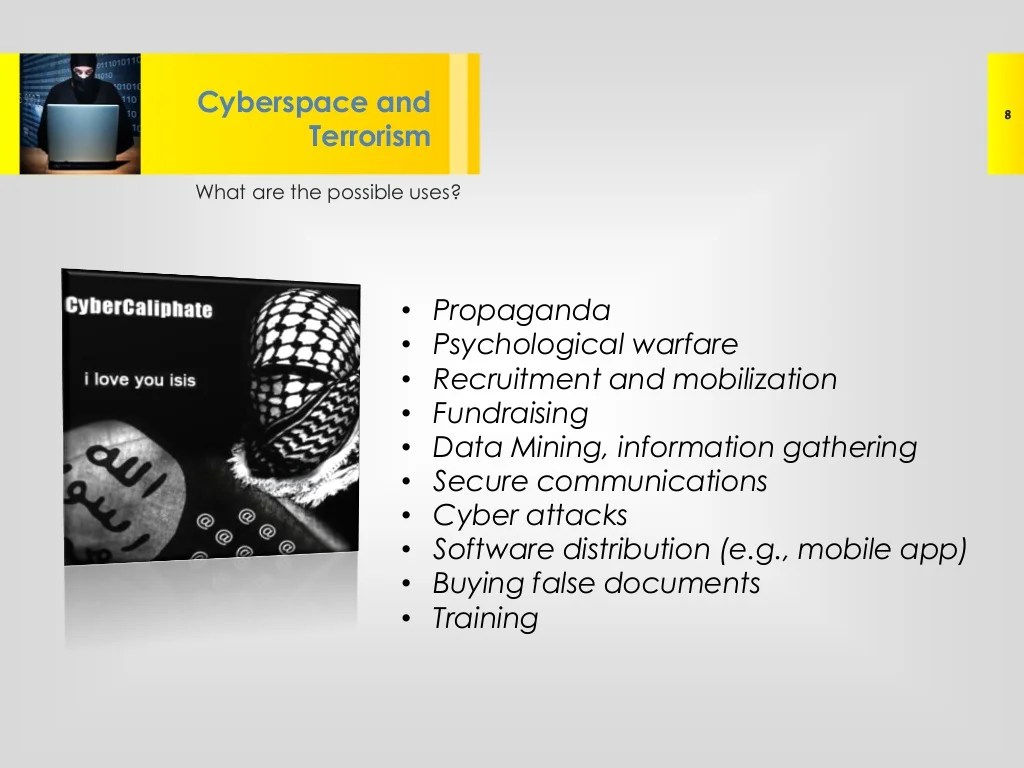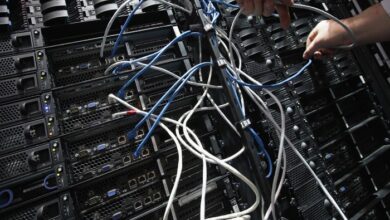Fighting Terrorism Through Technology A Comprehensive Approach
Fighting terrorism through technology is a complex and multifaceted endeavor. It involves leveraging surveillance technologies, data analytics, and social media monitoring to identify potential threats and prevent radicalization. Artificial intelligence plays a crucial role in analyzing patterns of suspicious activity, while cybersecurity measures are employed to protect against terrorist groups. This exploration delves into the ethical considerations, international cooperation, public perception, and the future of technology in combating terrorism.
The discussion will cover various technologies used in counter-terrorism, from surveillance systems to AI-powered threat assessments. Ethical dilemmas, including bias in algorithms and privacy violations, will be examined. The importance of international cooperation and the need for robust legal frameworks will be highlighted. Finally, the potential future of technology in this area, including emerging technologies and their evolution, will be addressed.
Technological Tools for Counter-Terrorism
The fight against terrorism requires a multifaceted approach, and technology plays a crucial role in gathering intelligence, analyzing threats, and preventing attacks. Sophisticated tools, from surveillance systems to data analytics platforms, are essential in this ongoing battle. This exploration delves into specific technological applications in counter-terrorism, examining their effectiveness and potential limitations.
Surveillance Technologies
Advanced surveillance technologies are employed to monitor potential threats and gather crucial intelligence. These technologies range from sophisticated camera systems to advanced sensor networks. For example, thermal imaging cameras can detect individuals or vehicles in low-light conditions, while facial recognition systems can identify known suspects or individuals of interest. Furthermore, satellite imagery and drone surveillance can provide a broader view of potential activity in a region.
These technologies, however, raise important privacy concerns that must be carefully considered and addressed.
Data Analytics for Threat Identification
Data analytics plays a vital role in identifying potential terrorist threats by analyzing vast amounts of data from various sources. This data can include social media posts, financial transactions, travel patterns, and communications. Sophisticated algorithms can detect patterns and anomalies that might indicate malicious intent. For instance, unusual spikes in online communications between individuals linked to known terrorist groups or patterns in financial transactions that suggest illicit activity can be flagged and investigated.
These insights help law enforcement agencies anticipate and prevent potential attacks.
Social Media Monitoring for Radicalization Detection
Social media platforms are increasingly used to identify and track individuals who may be susceptible to radicalization. By monitoring online activity, law enforcement agencies can identify potential threats early on. For example, individuals exhibiting extremist views or engaging in activities that suggest a move toward violence can be flagged for intervention and support. Moreover, monitoring online groups and communities can reveal the spread of extremist ideologies and the recruitment of new members.
This proactive approach is crucial in countering the spread of radicalization.
Artificial Intelligence for Suspicious Activity Analysis
Artificial intelligence (AI) is being used to analyze patterns of suspicious activity and identify potential threats. AI algorithms can analyze large datasets of information to detect patterns that human analysts might miss. This includes identifying patterns in communication, travel, and financial transactions that might indicate planning for an attack. AI can process and analyze vast quantities of data, enabling quicker and more accurate threat assessments.
Fighting terrorism with tech is a complex game, and vulnerabilities in software like the recent “worm takes toll microsoft attack set” worm takes toll microsoft attack set highlight just how crucial it is to stay ahead of the curve. We need robust security measures and proactive strategies to protect against these kinds of attacks, which directly impacts our ability to use technology effectively to combat terrorism.
This helps prioritize investigations and allocate resources effectively.
Cybersecurity Measures Against Terrorist Groups
| Technology Type | Description | Advantages | Disadvantages |
|---|---|---|---|
| Network Intrusion Detection Systems (NIDS) | Monitor network traffic for malicious activity, such as unauthorized access attempts or the spread of malware. | Early detection of cyberattacks, prevention of data breaches, and enhanced network security. | False positives can lead to wasted resources, and the systems might not be effective against sophisticated attacks. |
| Firewalls | Control network traffic by allowing or blocking specific connections based on predefined rules. | Prevent unauthorized access to networks and resources, enhancing security posture, and providing a first line of defense against cyber threats. | Complex configurations can be challenging, and firewalls can be bypassed by determined attackers. |
| Anti-virus Software | Detect and remove malicious software, such as viruses, worms, and Trojans, from computer systems. | Protect systems from malware infections, maintaining system stability and preventing data loss. | Signatures of new malware might not be available, and the effectiveness can vary depending on the system’s configuration. |
| Data Encryption | Convert data into an unreadable format that can only be accessed with a decryption key. | Protecting sensitive information from unauthorized access, reducing the risk of data breaches, and enhancing confidentiality. | Requires careful key management and can affect system performance. |
Ethical Considerations in Technological Counter-Terrorism
The relentless pursuit of security in the face of terrorism often leads to a complex interplay between technological advancements and ethical dilemmas. While technology offers powerful tools for identifying and mitigating threats, its implementation raises crucial questions about individual liberties, societal biases, and the very definition of security. The ethical landscape surrounding technological counter-terrorism is a critical area demanding careful consideration to ensure responsible deployment and avoid unintended consequences.Advanced surveillance technologies, while seemingly offering solutions, create a delicate balance between public safety and individual privacy.
Understanding the nuances of this balance is paramount to responsible technological advancement in this domain. Ethical frameworks and thoughtful consideration of potential biases are crucial to ensuring these tools are used effectively and equitably.
Surveillance Technologies and Bias
The deployment of advanced surveillance technologies, like facial recognition, raises concerns about potential bias and discrimination. Algorithmic risk assessments, often used to predict potential threats, can inadvertently perpetuate existing societal biases, leading to unfair targeting of specific groups. Historical data, if not carefully scrutinized, can incorporate biases present in past policing practices, resulting in discriminatory outcomes. For example, if an algorithm is trained on data reflecting historical racial disparities in arrests, it may disproportionately flag individuals from certain racial or ethnic backgrounds as potential threats.
Fighting terrorism through technology is a complex issue, but innovative solutions are crucial. For example, advancements in portable devices, like Sony’s new CLIE PDAs, which will use in-house chips here , could potentially lead to more secure and efficient systems for data analysis and threat detection. This ultimately plays a vital role in identifying and mitigating potential threats before they escalate.
This could lead to unwarranted scrutiny, invasive surveillance, and violations of civil liberties.
Privacy Violations in Mass Surveillance
Mass surveillance programs, employing sophisticated data collection techniques, inevitably raise significant privacy concerns. The sheer volume of data collected, encompassing various aspects of individuals’ lives, poses a substantial risk of misuse and unauthorized access. The potential for misuse by governments or malicious actors is a critical concern. Data breaches and leaks, which are unfortunately not uncommon, could expose sensitive information, potentially jeopardizing individuals’ safety and security.
The potential for misinterpretation and the lack of transparency in these systems further compound the ethical challenges.
Facial Recognition Technology in Public Spaces
Facial recognition technology, while offering the potential for enhanced security in public spaces, comes with a range of ethical implications. The benefits of identifying suspects or individuals of interest are clear. However, the potential for misidentification, inaccurate or biased results, and the intrusion into the privacy of innocent individuals are significant drawbacks. The constant surveillance in public spaces could create a sense of constant monitoring and inhibit freedom of movement.
The ongoing debate surrounding the balance between public safety and individual rights remains unresolved in many jurisdictions.
Ethical Frameworks for Technological Counter-Terrorism
A comprehensive understanding of ethical considerations requires examining various ethical frameworks applicable to the use of technology in counter-terrorism. These frameworks offer diverse perspectives on how to navigate the complex ethical dilemmas.
| Framework | Key Principles | Application to Technology | Potential Conflicts |
|---|---|---|---|
| Utilitarianism | Maximizing overall happiness and well-being | Assessing the overall societal benefit of a surveillance program, weighing the potential reduction in terrorist threats against the potential harms to individual liberties | Potential for overlooking the harm to specific individuals or minority groups in the pursuit of overall benefit |
| Deontology | Following moral duties and rules | Adhering to legal and ethical regulations governing data collection, surveillance, and algorithmic decision-making | Potential conflict between the duty to protect society and the duty to respect individual rights |
| Virtue Ethics | Developing virtuous character traits | Encouraging the development of ethical awareness and accountability in those implementing and overseeing technological counter-terrorism strategies | Difficulty in defining and measuring virtues in the context of complex technological systems |
| Rights-Based Ethics | Protecting fundamental human rights | Prioritizing the rights to privacy, due process, and freedom of movement when implementing technological counter-terrorism measures | Potential tension between security concerns and the protection of individual rights |
International Cooperation in Counter-Terrorism Technology
Global terrorism poses a significant threat requiring a multifaceted approach, and technological solutions play a crucial role in combating it. International cooperation is paramount in developing and deploying these tools effectively, as no single nation possesses all the resources or expertise to address the evolving nature of terrorist threats. Effective counter-terrorism strategies necessitate shared intelligence, coordinated responses, and the development of common standards.International collaboration in this area isn’t merely desirable; it’s essential for success.
Sharing information and resources allows for the identification of patterns, the prevention of attacks, and the development of more effective countermeasures. This shared approach fosters a more robust and resilient global security architecture.
Need for International Collaboration, Fighting terrorism through technology
Effective counter-terrorism necessitates a coordinated global response. Individual nations often lack the resources or expertise to fully address the complexities of terrorism, making international collaboration indispensable. A shared understanding of threats, technologies, and best practices is crucial for a unified and impactful strategy. This shared approach ensures that counter-terrorism efforts are not only comprehensive but also adaptable to the evolving nature of terrorist tactics.
Examples of Successful International Partnerships
Numerous international collaborations have proven successful in combating terrorism. One notable example is the cooperation between law enforcement agencies in various countries to track and disrupt terrorist financing networks. Another example is the joint development of advanced biometric identification systems, enabling more accurate and efficient screening of individuals and materials. Sharing intelligence and best practices has enabled agencies to enhance their ability to prevent attacks.
The European Union’s framework for information sharing among member states is a prime example of such cooperation.
Challenges in Achieving Consensus on Technology Standards and Best Practices
Despite the need for international cooperation, several challenges impede the development of uniform technology standards and best practices. Varying legal frameworks, differing levels of technological development among nations, and concerns about data privacy and security are among the primary hurdles. Addressing these concerns requires careful diplomacy and a commitment to finding common ground.
Sharing Intelligence Across Borders
Sharing intelligence across borders is critical in preventing attacks. By facilitating the exchange of information on potential threats, patterns, and individuals involved in terrorist activities, countries can proactively identify and neutralize threats. This collaborative intelligence sharing fosters a network of security that allows for faster and more effective responses to emerging threats. The sharing of data must be carefully managed to protect sensitive information while maximizing its value for counter-terrorism efforts.
International Agreements and Treaties
International agreements and treaties play a critical role in formalizing cooperation in counter-terrorism technology. These agreements establish legal frameworks, guidelines, and responsibilities for nations in dealing with terrorism. The existence of these treaties demonstrates the global recognition of the need for a united front in fighting this menace.
| Treaty Name | Year Signed | Key Provisions | Participating Countries |
|---|---|---|---|
| United Nations Convention against Transnational Organized Crime | 2000 | Addresses transnational organized crime, including terrorism financing. Includes provisions for cooperation among states. | Various countries worldwide |
| Convention on the Physical Protection of Nuclear Materials | 1980 | Focuses on the protection of nuclear materials and facilities from theft or sabotage. | Various countries with nuclear facilities |
| International Convention for the Suppression of Terrorist Bombings | 1997 | Outlaws the use of bombings as a terrorist tactic and Artikels the responsibilities of states in preventing and prosecuting such crimes. | Many countries worldwide |
| International Convention for the Suppression of the Financing of Terrorism | 1999 | Addresses the financing of terrorist activities and provides mechanisms for international cooperation in combating this. | Numerous countries |
Public Perception and Acceptance of Technological Solutions

Public acceptance of technological solutions in counter-terrorism is crucial for their effectiveness. Misunderstanding or distrust can hinder implementation and potentially lead to unintended consequences. This section explores public concerns, strategies for building trust, and the vital role of transparency and accountability.Public concerns regarding counter-terrorism technologies often center on privacy violations, potential for misuse, and lack of transparency in their development and deployment.
Citizens may fear that these technologies could infringe on their civil liberties, be used to target specific groups, or be ineffective or even counterproductive. The potential for bias in algorithms and the lack of public understanding of how these technologies work also contribute to apprehension.
Public Concerns and Anxieties
Public anxieties stem from a variety of factors. Concerns about the potential for mass surveillance and the collection of personal data are prominent. There’s a worry that these technologies might be used disproportionately against specific communities or individuals, leading to discrimination or unfair targeting. A lack of clear guidelines and oversight regarding data retention and usage also fuels public apprehension.
Fighting terrorism with tech often involves sophisticated surveillance, and understanding how corporations track digital content is key. This comprehensive guide, Helping Corporations Track Digital Content A Comprehensive Guide , reveals the methods and tools used to analyze vast amounts of data. Ultimately, the insights gleaned from this kind of analysis can help pinpoint suspicious activity and ultimately aid in preventing terrorist acts.
This is crucial for the future of security.
The fear that these technologies might be ineffective or counterproductive, exacerbating tensions or creating new security risks, is also a factor.
Strategies for Building Public Trust
Building public trust in counter-terrorism technologies requires proactive communication and engagement. Open dialogue about the technology’s capabilities and limitations is essential. Clearly defined ethical guidelines and oversight mechanisms, including independent reviews and audits, can help instill confidence. Public education initiatives that explain how these technologies work and their intended use can dispel misconceptions.
Transparency and Accountability
Transparency in the development, deployment, and use of counter-terrorism technologies is paramount. Publicly accessible information about the technologies, their limitations, and their potential impacts is crucial. Independent oversight bodies and mechanisms for public input are essential. Mechanisms for accountability and redress should be established to address any misuse or unintended consequences.
Examples of Successful Communication Strategies
Several examples illustrate effective communication strategies. For instance, open forums and public consultations can provide platforms for dialogue and address concerns directly. The use of clear and concise language, avoiding jargon, and presenting information in a relatable manner is also vital. Demonstrating the technology’s effectiveness in specific, real-world scenarios, without compromising privacy, can help build public confidence.
Public Engagement Strategies for Explaining the Use of New Technologies
| Strategy | Target Audience | Methods | Expected Outcomes |
|---|---|---|---|
| Public Forums & Consultations | General public, civil society groups | Open discussions, Q&A sessions, presentations, feedback mechanisms | Increased understanding, identification of concerns, building trust |
| Educational Campaigns | Schools, universities, community centers | Workshops, presentations, educational materials, online resources | Improved awareness, understanding of technology capabilities and limitations |
| Transparency Reports & Audits | Government agencies, research institutions | Regular reports on technology usage, independent audits of algorithms | Increased accountability, building public confidence in technology’s responsible use |
| Case Studies & Success Stories | Law enforcement, security agencies | Demonstrating the technology’s effectiveness in specific situations without revealing sensitive information | Highlighting the technology’s positive impact, fostering public confidence |
The Future of Technology in Fighting Terrorism: Fighting Terrorism Through Technology
The fight against terrorism is a multifaceted challenge, and technology plays an increasingly vital role. As technology advances, new tools and strategies emerge, promising to enhance our ability to prevent and respond to terrorist acts. However, this progress also necessitates careful consideration of the ethical and societal implications that accompany these innovations.
Emerging Technologies with Potential for Counter-Terrorism
Advancements in various technological fields present opportunities for counter-terrorism applications. These include artificial intelligence (AI), machine learning (ML), advanced sensor technologies, and data analytics. AI-powered systems can analyze vast amounts of data to identify patterns and potential threats, potentially preventing attacks before they occur.
- Artificial Intelligence (AI) and Machine Learning (ML): AI algorithms can analyze massive datasets, identifying patterns and anomalies indicative of potential terrorist activity. For instance, analyzing social media posts, online forums, and financial transactions can uncover suspicious behavior. Sophisticated ML models can detect subtle shifts in language or patterns in communication that might signal an impending threat.
- Advanced Sensor Technologies: Drone-based surveillance systems, equipped with advanced sensors, can monitor large areas for suspicious activity. These systems can identify unusual patterns in movement, detect explosive materials, and track individuals of interest. Thermal imaging and acoustic sensors can provide insights into covert operations.
- Data Analytics and Information Sharing: Integrating data from various sources, including law enforcement agencies, intelligence services, and social media platforms, can offer a comprehensive view of potential threats. Sophisticated data analytics can help identify connections between seemingly unrelated events and individuals, facilitating proactive counter-terrorism strategies.
Evolution of Counter-Terrorism Technologies
The evolution of these technologies is not linear. AI systems will likely become more sophisticated, capable of processing data in real-time and adapting to evolving threats. Sensor technology will become more compact, mobile, and capable of gathering more data from diverse sources. Data analytics will become more sophisticated, allowing for the identification of subtle connections and patterns that might otherwise be missed.
Ongoing Research and Development
Continued research and development are crucial for enhancing the effectiveness of technology in counter-terrorism. This includes improving the accuracy and speed of AI algorithms, developing more robust sensor systems, and creating more sophisticated data analytics platforms. Moreover, research should focus on mitigating biases in AI algorithms to ensure fair and equitable application.
Future Scenarios Involving Advanced Technologies
Future scenarios may involve the use of AI-powered systems for predicting and preventing terrorist attacks. Advanced sensors could be deployed in public spaces to detect suspicious activities, while data analytics could be used to track potential threats. This could lead to a proactive approach to counter-terrorism, allowing for preemptive actions rather than reactive responses.
Visual Representation of Potential Evolution
| Phase | Technology | Description |
|---|---|---|
| Phase 1 (Current) | Traditional Surveillance | Limited data sources, reactive approach |
| Phase 2 (Near Future) | AI-powered analysis | Predictive capabilities, improved threat detection |
| Phase 3 (Mid-Future) | Advanced Sensor Networks | Real-time threat monitoring, enhanced situational awareness |
| Phase 4 (Long-Future) | Autonomous Response Systems | Proactive measures, automated threat neutralization |
Security and Privacy Trade-offs
The relentless march of technology in counter-terrorism efforts presents a critical dilemma: how to maximize security without compromising individual privacy. Balancing these competing interests is paramount, requiring a nuanced understanding of the potential risks and benefits of different approaches. The very tools designed to prevent terrorism can inadvertently create new vulnerabilities, and this necessitates careful consideration of the ethical implications.The use of sophisticated surveillance technologies, data mining, and predictive policing strategies raises profound questions about the limits of government intrusion and the protection of fundamental rights.
Striking a balance between these competing demands necessitates a thoughtful approach that prioritizes both security and liberty. This involves a careful evaluation of the potential harms and benefits of each strategy, coupled with transparent and accountable processes.
Various Approaches to Managing the Tension
Different models for balancing security and privacy have emerged, each with its own set of strengths and weaknesses. These models reflect varying levels of trust in government, the extent of individual liberties, and the perceived threat level. The crucial element is ensuring accountability and transparency in the implementation of these measures.
Examples of Successful Models for Minimizing Privacy Violations
Several jurisdictions have implemented frameworks that aim to minimize privacy violations while enhancing security. These models often involve strict regulations on data collection, storage, and use. They frequently include independent oversight bodies to monitor the activities of security agencies and ensure compliance with established legal frameworks. A prime example is the European Union’s General Data Protection Regulation (GDPR), which mandates specific consent procedures and data protection measures.
This regulatory framework seeks to strike a balance between security and individual privacy by establishing clear guidelines and enforcement mechanisms.
Importance of Robust Legal Frameworks
Robust legal frameworks are essential to govern the use of technological tools in counter-terrorism. These frameworks should clearly define the scope of permissible surveillance, establish safeguards against abuse, and Artikel mechanisms for redress if privacy rights are violated. They should be transparent and accessible to the public. Without clear legal boundaries, the potential for misuse and overreach is substantial.
Table of Balancing Security and Privacy Models
| Model Name | Key Principles | Strengths | Weaknesses |
|---|---|---|---|
| Proportional Approach | Data collection and surveillance are limited to the specific threat level and the least intrusive means necessary. | Reduces the risk of overreach and minimizes privacy violations. | Determining the appropriate level of intrusion can be subjective and challenging. May be perceived as insufficient in high-threat environments. |
| Privacy-by-Design Approach | Privacy considerations are incorporated into the design and implementation of security technologies from the outset. | Reduces the potential for privacy violations and promotes a more user-friendly approach. | Requires significant upfront planning and resources. May be difficult to implement in rapidly evolving security environments. |
| Layered Approach | Combines multiple security measures with varying levels of intrusion and privacy impact. | Provides a flexible and adaptable response to different threat levels. | Complexity of implementation and potential for inconsistencies across different layers. |
| Transparency and Accountability Approach | Ensures that the public understands the use of security technologies and has mechanisms for oversight and redress. | Builds public trust and reduces potential for abuse. | Can be challenging to maintain transparency in sensitive security operations. |
Closing Notes

In conclusion, fighting terrorism through technology requires a multifaceted approach that balances security concerns with ethical considerations and public acceptance. This involves not only developing advanced tools but also fostering international cooperation, addressing public anxieties, and establishing robust legal frameworks. The future of this complex issue necessitates continuous research, development, and a commitment to finding effective solutions while mitigating potential risks.






